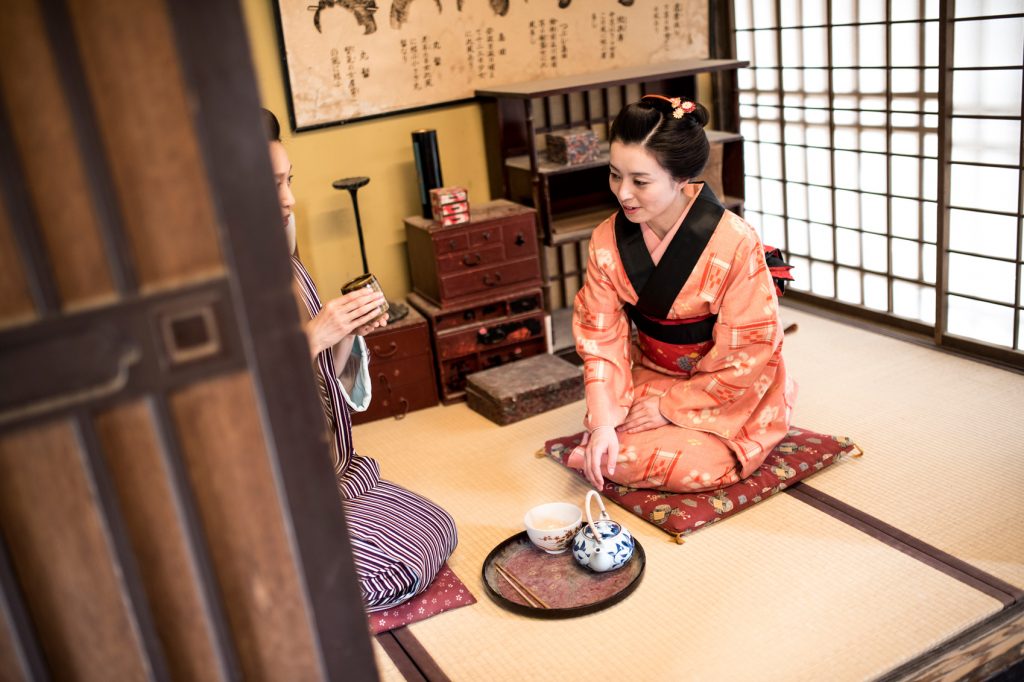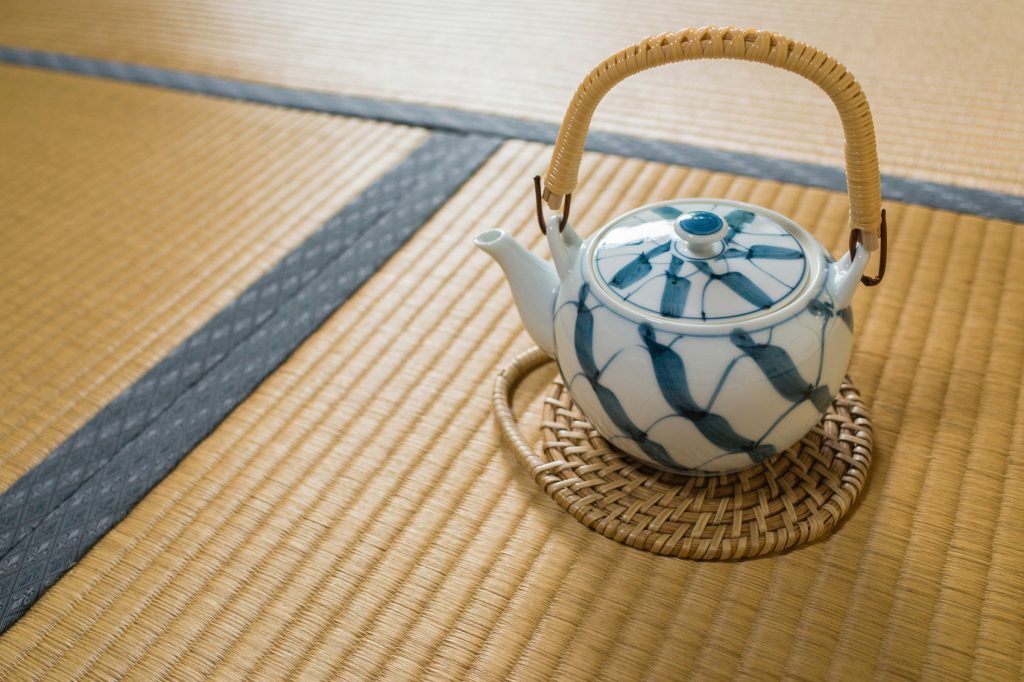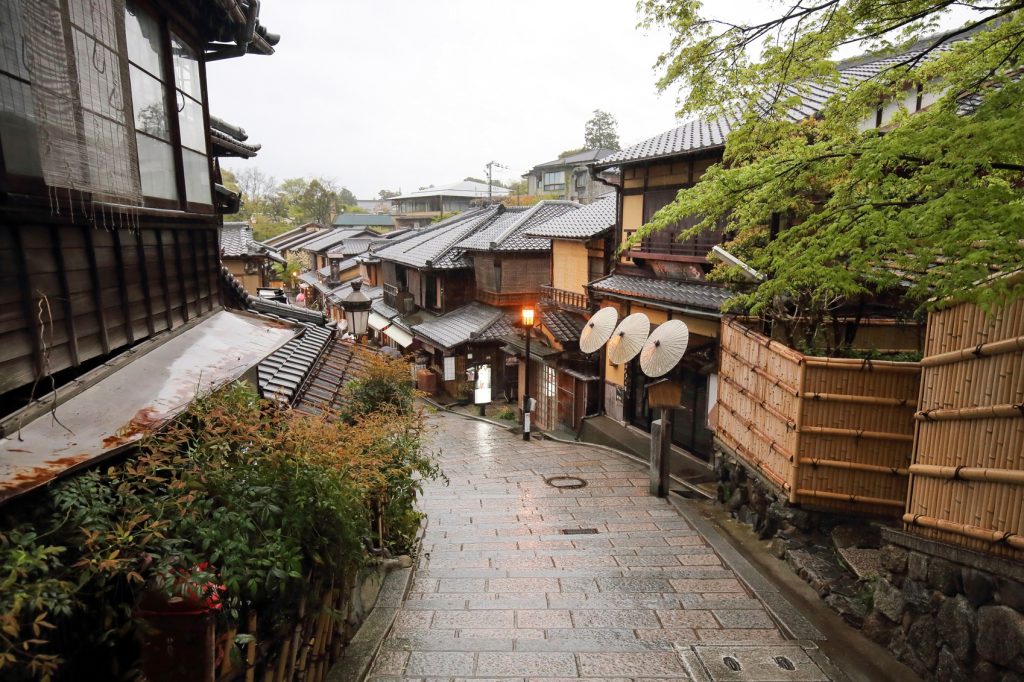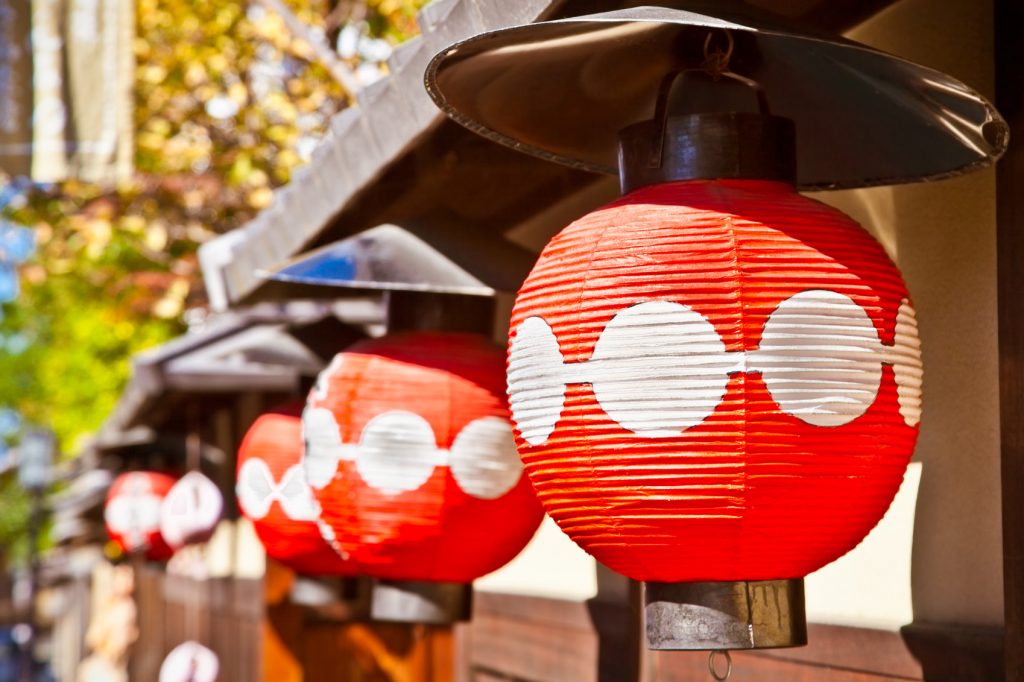Recently updated on July 31st, 2023 at 04:12 pm
Across Japan, the reverence for the country’s traditional culture is clear, and having developed such distinct customs, this is often what’s most rewarding for visitors. Kyoto is at the heart of this cultural tradition with its abundance of atmospheric temples, enigmatic geisha and celebration of authentic performing arts. Naturally, the tea ceremony is among the customs upheld to this day, and it’s within the Japanese tea houses of Kyoto that this tradition is revealed.


Tea has been drunk in Japan for more than 1,000 years, but the tea ceremony consisting of the precise preparation and presentation of the powdered green tea (which is also known as the ‘Way of Tea’) didn’t begin until around the 16th century, when wealthy merchants in Kyoto hosted lavish tea ceremonies for guests. One of the most influential tea masters at this time was Sen no Rikyū, who is credited for the now widespread Japanese philosophy and aesthetic wabi-sabi – the beauty found in imperfection, transience and authenticity – which replaced the former preference for the rich and ornate.


Today, tea ceremonies are held for visitors across Kyoto, giving people the opportunity to sip on bitter matcha tea with sweets that balance the flavour. Traditional tea house, Camellia, lies within the area surrounding Kiyomizu-dera, and is run by Atsuko Mori, who introduces visitors to the formal tea ceremony in a relaxed setting.
Within Gion, it’s worth seeking out En, which introduces guests to the tea ceremony while also examining how to prepare the tea as well as the significance behind it. In the same neighbourhood, visitors can find Gion Corner. Here, guests have the rare opportunity to gain insight into seven of Kyoto’s traditional performing arts, which of course includes the Japanese tea ceremony.


In west Kyoto, It’s the dense Sagano bamboo grove and sprawling temple complexes that people come to Arashiyama for. But this scenic suburb also has an abundance of shops and cafes focusing on Japanese delicacies and artisanal goods. Perhaps the most atmospheric of the Japanese tea houses here is within Ōkōchi Sansō Villa, the former home of 1920s silent-movie star Denjirō Ōkōchi. The entrance fee includes matcha green tea and sweets.
Many of the temples have their own tea houses too, where visitors can enjoy a bowl of the powdered green tea overlooking a Japanese garden, without the formality of the ceremony. These can be found within the sprawling grounds of Kiyomizu-dera, at the Golden Temple Kinkaku-ji, and amidst the iconic torii-gate walkways of the famous shrine of Fushimi Inari-taisha, giving visitors time to sit back and reflect on the serenity of their surroundings.


Discover these Japanese tea houses in Kyoto by joining the Splendours of Japan trip, Splendours of Japan with Hiroshima, Leisurely Japan, and Leisurely Japan with Tokyo.
Image credits: Cover photo © iStock / bhofack2. A Tea House in Kyoto © iStock / AzmanL. Tea on the tatami flooring © iStock / Christopher Ames. Gion © iStock / charnsitr. Lanterns in Gion © iStock / master2.